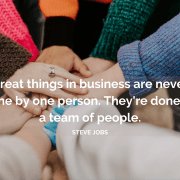Working From Home Made Easier With Submit; Granular Team Permissions To Suit Any Structure And Workflow
With working from home accelerating to such a level that would never have been imagined pre-2020, it’s a good time to look at aspects of how this can all be managed. How the nature of the job itself flows is always a different matter, but there are a lot of similarities which we’ll discuss here, along with the advantages for doing so.
Thinking about setting up for the first time, away from the natural environment that the office is thought of, may seem a hectic and somewhat stressful concern at first. In addition to the fact that it is the place which has all of the necessary information, resources etc, it is also the environment that has become routine for the average worker.
Now that so much of business is conducted digitally, it is no longer the case as before (from merely a decade or even a few years ago) that every professional need attend the office directly.
Indeed, what would otherwise seem hugely complex has become easier thanks to the nature of an element such as ‘granular permissions’. This is something that not every person may recognise as a term or function, so it bodes the ‘what are they and how do they work?’ questions.
These are mostly used to grant system privileges, which carry on with roles such as constructing site elements, matching any forms of requirements needed and adding or restricting administrators and user data. How they can be so useful to somebody working from home, for example, is what we’ll talk about in more detail.
What Granular permissions are and how beneficial they can be:
At Submit we have seen the many benefits of clients using software that saves time and unnecessary effort, and granular permissions are one of the clearest examples yet that combine these kinds of features. From accessing user and team information, these permissions make any process much easier and create different levels of access per user.
Usually there would be those that have full access level granted, who can themselves modify or change the level for other participants in a thread or document folder. Following the full access level, in descending order of the ability to use the information there would be; ‘can edit’ ‘can comment’ and ‘can view’.
Of course, within any given company’s framework there would be differing levels of permission to contend with, and these would also depend somewhat on the size or scale of the business itself. Different staff, groups and levels would understandably have other requirements which would have to be clarified before committing to the project itself.
Team applications are also something which can be managed from the same point, where the members can edit, read and write content as a team, with the option to add and upload a number of different files and videos.
In the past, it would have been necessary for an administrator to give access or permission to programmes or the equivalent of what is required for the project. There would often have been further restrictions and a waiting time to get past, however, now it is almost instantaneous and files and information can be opened and shared within minutes.
Cutting down on unnecessary administrative tasks saves a huge amount of time in working towards a common goal, and having various members on the same page makes the process much easier.
Working on permissions and keeping security in mind
Of course, while having these permissions readily accessible and being prepared in general is an excellent feat, it is also important to address the topic of security. Granular team permissions contain the keys to a lot of sensitive and confidential information, so it is necessary to consider a few factors. Keeping group data specific to who needs the material, so that the risk is somewhat minimised, and also taking the burden off of the administrator who would need to provide the initial permission.
With the potential impact of giving users access to any application or file, it should be looked at in terms of limiting to a set of group owners. The days of posting and emailing such crucial information and specifications to external members should be over, and Submit’s system would guide the process into the future of this technology.
For additional information and guidance, when planning to allow consent for various permissions to team members, make sure that you realise support from our team is also available. Reviewing the application measures available to the organization would also benefit in terms of understanding the layout. From there, applications which do not meet the necessary security policies can be blocked or deleted, and new programmes would have to go through the process for initial approval.
Advantages to working from home with the permissions granted
- Flexibility
- Ease of access
- Immediacy for working individually
- Group connectivity
These are the main aspects of how the permission can help the flow of both individual and team-based workers. By having the relevant data, editing and uploading content available, workers can continue and work autonomously based in their own homes. Ease of access is of course at the core of the question, as the different forms of ownership, editing and uploading become so much more free flowing, and with far less of a burden. The feeling of being able to stay on the same page as work colleagues is an added bonus, as is having the specific information at any given time.
All of this combines to an overall group connectivity which can be attained when the satisfaction level suggests that everybody really is on the same page. This in turn can be good for morale, and makes the team perform to a higher standard while saving time with it.
Adding this in with how we adapt our own grant management system software at Submit, there are a number of factors which can also be looked at.
As well as the time that will be saved across the platform, it is beneficial to communicate with everyone on the specific team. This communication will flow much more fluidly as a result, and audit trails are kept of all previous actions so that anything can be followed up easily in the case of uncertainty. For more technical information on this topic, we talk about specific role-based permissions here.
Don’t hesitate to get in touch with our team today for a free trial, and help to boost your company’s profile and performance rate!












Leave a Reply
Want to join the discussion?Feel free to contribute!